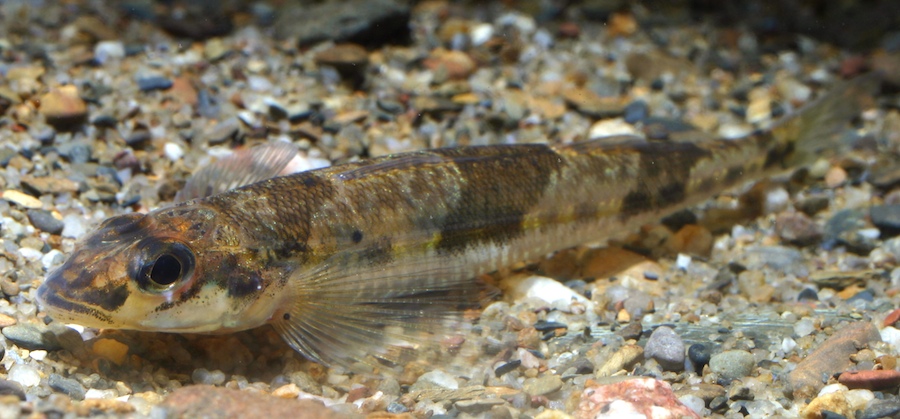by the Center for Biological Diversity
CHARLESTON, W.V.— The U.S. Fish and Wildlife Service today proposed Endangered Species Act protections for a small fish called the diamond darter and 122 river miles of its critical habitat in West Virginia and Kentucky. The decision stems from a 2011 landmark legal settlement with the Center for Biological Diversity to speed protection decisions for 757 species around the country. The diamond darter is extremely rare; fewer than 50 individuals have been collected over the past 30 years. It was thought to be extinct until it was rediscovered in West Virginia in 1980.
“The diamond darter is one of the most endangered fish in the world. We’re thrilled that it’s getting the Endangered Species Act protection that will make sure it isn’t lost forever,” said Center biologist Tierra Curry.
The diamond darter is threatened by mountaintop removal coal mining, oil and gas development that includes fracking, untreated sewage, a fast-spreading invasive toxic algae and stream impacts from global climate change.
The diamond darter became a candidate for Endangered Species Act protection in 2009. In 2011 the Center and the Fish and Wildlife Service reached a landmark legal settlement to speed protections for candidate species. Some protections will immediately go into effect for the diamond darter as the result of today’s proposal.
Once found in five states, the diamond darter today survives only in the Elk River in West Virginia. It once occurred in the Muskingum River in Ohio; the Ohio River in Ohio, Kentucky and Indiana; the Green River in Kentucky; and the Cumberland River Drainage in Kentucky and Tennessee. It has not been seen in Ohio since 1899, in Kentucky since 1929, and in Tennessee since 1939. Today’s announcement proposes to protect the darters’ “critical habitat” in West Virginia’s Kanawha and Clay counties and Kentucky’s Edmonson, Hart, and Green counties.
“The Elk River is one of the most ecologically diverse rivers in the country, supporting more than 100 species of fish and 30 species of mussels, but it’s also one of the most threatened. Coal mining occurs throughout the entire Elk River watershed, and fracking is a rapidly emerging threat,” said Curry.
Diamond darters are small fish with olive-brown diamond-shaped markings on their backs. They feed on insects on the stream bottom by burying themselves in the sand and then darting out to ambush prey. Males establish spawning territories and then guard them. They are dependent on clean water because silt fills in the spaces between rocks that they need for egg laying and harms the insects on which they feed. They live from 2 to 7 years.
The Southeastern Fishes Council named the diamond darter as one of the “Desperate Dozen” — the 12 most imperiled fish in the southeastern United States.
The Southeast is home to more kinds of freshwater animals than anywhere in the world, but the region has recently lost more than 50 freshwater animals to extinction. The Center is working to save more than 400 vanishing southeastern aquatic species.

